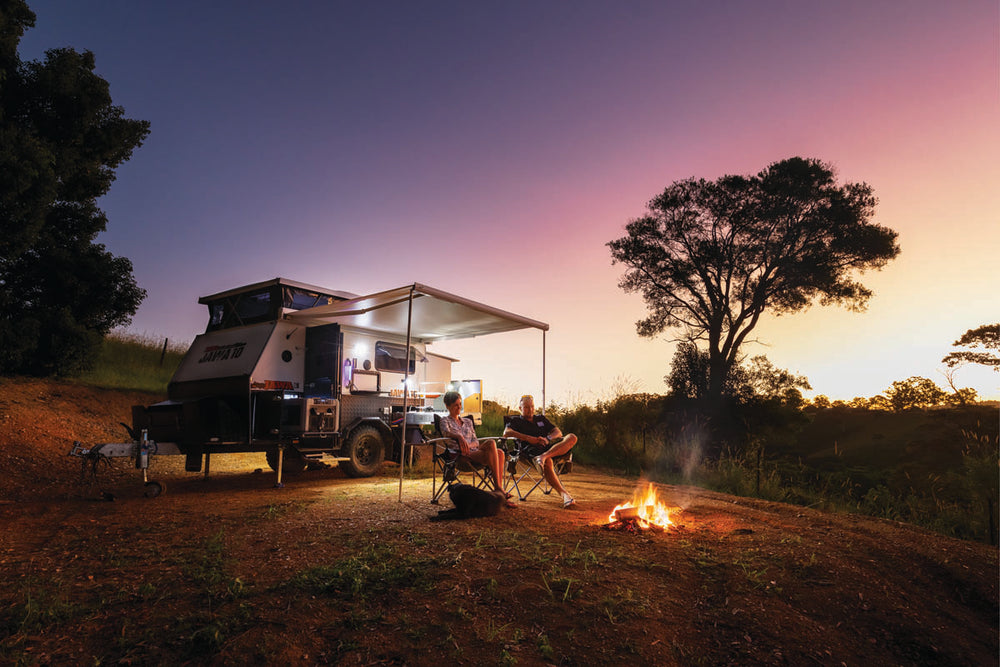

In this article, David shares advice on how to future-proof your 12V electrical setup when upgrading to a new van.
Hi David,
Following up on your recent articles about electrical systems in vans, we were after some advice on things we need to keep in mind when we purchase a new van. We have a New Age Manta Ray caravan that is around six years old and will be looking to upgrade it shortly — probably this year. What should we be thinking of? Love your column.
Thanks,
Mike and Judy
Grey Nomads (currently Port Hedland, WA)
Thanks Grey Nomads!
No doubt you are enjoying your travels and have seen some amazing parts of Australia along the way. I assume that you have been travelling for some time, and you have given good consideration as to what you think you’ll need in your next van. You’ve probably also seen some of the cool gear that other travellers have in their setups as well. The modern caravan owner has far greater energy needs than ever before. With the increasing popularity of lithium batteries, advanced inverters and smart monitoring systems, the days of simple 12V setups are behind us.
Consider your current and future energy needs
Start by evaluating what appliances and devices you currently use in your caravan and consider their location. Essentials such as lighting, a refrigerator and water pumps are standard, but modern setups often include air-conditioners, TVs, coffee machines and other high-demand appliances. Many owners also want to power laptops, drones and other tech equipment. Consider where you may charge these devices from in and around your caravan. For example, do you think you may need more solar (or at least want the flexibility)? Then request the wiring for this to be added from the get-go so that it can be run through the walls and roof without costly structural work later when retrofitting.
Consider your power storage
Create a solution that will enable you to either add batteries or invest in a larger battery bank later. Consider things such as wire size and fuses upfront. There’s no point setting up a 100Ah lead system when you want to increase this later. Ask for thicker cables and fusing to handle heavier charging and discharging. Skimping on wiring and connectors can lead to performance issues and even safety hazards. Even the storage should be considered. Many caravans now store the batteries externally — consider adding an additional battery basket that can be used later.
Prioritise smart monitoring and management
A smart power management system is no longer a luxury — it’s a necessity for anyone serious about future-proofing their 12V setup. These systems allow you to monitor battery levels, solar input and power consumption in real time, often via a smartphone app.
Brands such as BMPRO, popular in Australia, offer comprehensive power management systems designed specifically for caravans and RVs. With remote monitoring and easy integration, these systems help you identify inefficiencies and optimise energy use, ensuring your system runs at peak performance.
Plan for future integration
As technology evolves, new devices and features will become available. When designing your system, think about compatibility with future add-ons. For example, some modern battery management systems (BMS) and inverters are designed to integrate with additional features like temperature sensors, automatic generators and advanced load-shedding systems.
Opt for products with flexible firmware updates and robust ecosystems to stay ahead of the curve. Consider your connectivity to the internet for these firmware updates. You should also give thought to increasing the size of your shunt on the battery at the initial stages to ensure you can monitor the batteries effectively.
Consider safety and redundancy
Safety is paramount in any electrical system. Incorporate multiple safety features such as circuit breakers, fuses and thermal protection to prevent overloading or short circuits. Additionally, consider adding redundancy to your setup, such as dual charging sources (solar and alternator) to ensure power availability in all scenarios.
Safe travels
12V Guru
THE NEXT STEP
If you want to learn the latest caravan news, find the most innovative new caravans and camping gear or get inspired to plan your next adventure off the beaten track, subscribe to our weekly newsletter. We promise to send you only the best content.
Related articles:
12V Guru: Upgrade smart — avoid power compatibility issues
12V Guru: Pre-trip caravan safety checks of the van's electrics







